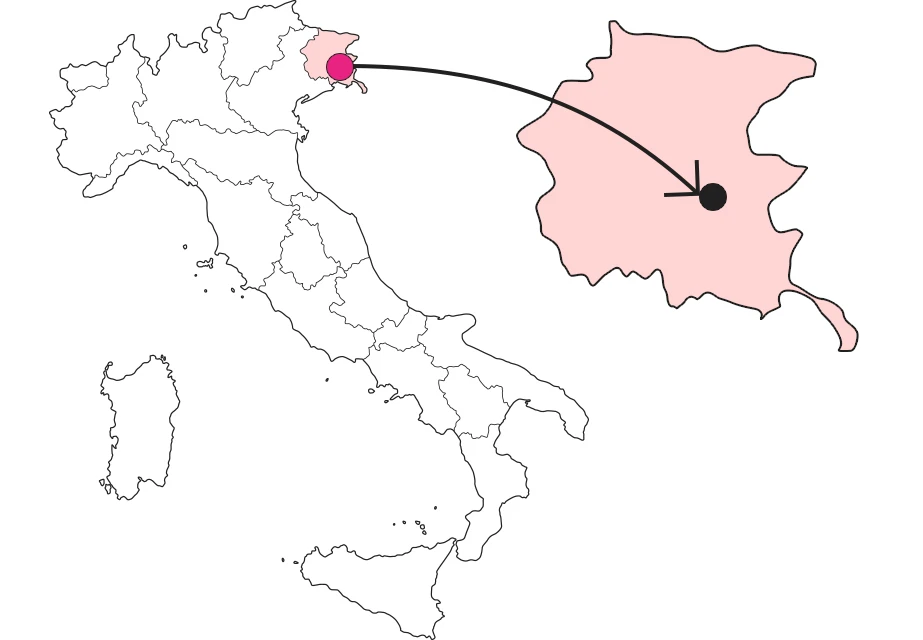SHARRYLAND


Place of Memory | Majano
The "Place of Remembrance" was built, in perpetual memory of the victims of the 1976 earthquake, on the area where the "Astra" apartment building, which collapsed as a result of the earthquake event, stood.

Where is

1976. The earth shakes, buildings collapse. Even those who were not yet born in those years know about the Friuli earthquake, an event too catastrophic to be forgotten. Perhaps one of the most surprising elements was precisely the tenacity with which the people rebuilt their towns, often exactly as they were before. Often, but not always: always in the name of that stubbornness, certain buildings that could not be restored were dismantled, and in their place, structures made of empty and full, of present and past, make indelible in memory of what was. This can be seen very well in Majano, where walking through the streets of the center one encounters structures that, with an empty mind, would be difficult to explain, but just a moment's reflection and it is immediately clear.
Place of Memory
This is the case of what is known as the "Place of Remembrance": built, in perpetual memory of the victims of the 1976 earthquake, on the area where the "Astra" apartment building stood, which collapsed following the seismic event. With this intervention, the aim was to recreate the memory of the village, urban voids, squares and courtyards, recovering the forms of the architecture of the place: the wall, the relationship between the street and the courtyard, the materials, the continuity of the built front along the street, the openings.
Along Via Roma stands a plastered wall, as a fragment and memory of the pre-existing buildings and a connection with the other buildings facing the street. To the side, two stone-clad walls follow the slope in steps while, above, two rows of linden trees screen the view to the sides, defining the area with a natural backdrop. The lower area, bordered on three sides by walls and the greenery of linden trees, opens toward the elevated part through a water wall that cascades down the staircase that gently leads toward Galilei Street. From the outside, the gates give a glimpse of the entire intervention, as in the villages the gates gave a glimpse of the interior of the courtyards. Water is meant to represent life. As a life force, the liquid element gushes from the spring in the elevated part of the ground, picks up speed in the side-by-side ramps of greenery, and then flows into the paved square behind, the fifth avenue, and eventually disappears again in a long slit that cuts diagonally across the path.
 Place of Memory
Place of MemoryAlong the crack in the pavement, a phrase from Pier Paolo Pasolini's "I turcs tal Friûl" carved into the stone in memory of May 6, 1976, chosen by family members of one of the victims of the apartment building collapse: "Strenzinsi ta l'ombrena da li nustris ciasis, cristians, cà, sensa domandasi mai nuja, nuja ch'i sin, pognès tal grin dal Signòur. Amen." (Let us huddle in the shadow of our homes, Christians, here, never wondering, for nothing we are, supine in the Lord's lap. Amen).
Italy Square
Italy Square is another symbol of rebirth. In 1990, the municipal administration put in place an initiative that created a space charged with memories and historical significance: the redevelopment and arrangement project in fact aimed to recover lost dignity, decorum and appearance. The current geometries of Piazza Italia articulate the spaces on the ground in a way that integrates with the original design of the garden of the former schools that were located right here. The result is a space that has regained its strength, once again becoming a theater of city life.
Church of Sts. Peter and Paul Apostles
It then happens to see old and new intertwining becoming part of each other. This is the case of the "biel tor," the old bell tower of the Church of Saints Peter and Paul Apostles, or at least, what remains of it. This church has undergone many demolitions and reconstructions over the centuries, and then perhaps it is not even too surprising that 1976 failed to bend it to its whims. Certainly the style of the new church is very distinctive, a centerpiece of modernity among Majano's traditional buildings. But the most beautiful element is precisely the bell tower: the "biel tor" still serves as the base of the modern structure, erasing all boundaries between present and past.
Enter the Map of Italy's Undiscovered Wonders and find treasures where you least expect it... Inspire, Recommend, Share...
Collections
The Map thanks:
Enter the Map of Italy's Undiscovered Wonders and find treasures where you least expect it... Inspire, Recommend, Share...
Where is

Collections


